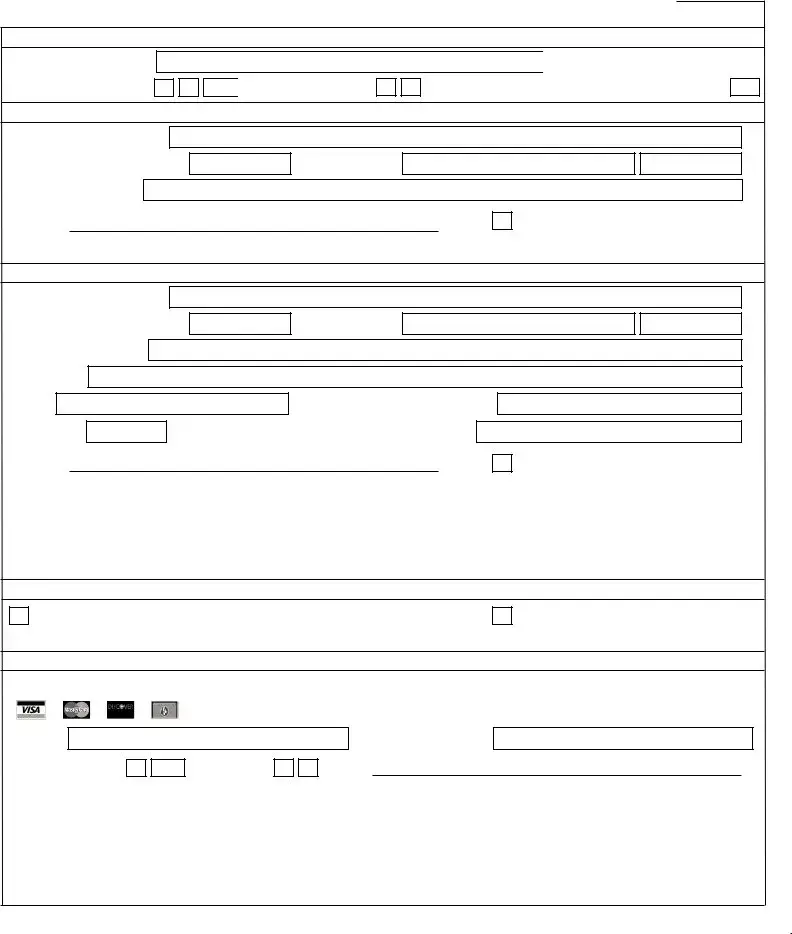The American Kennel Club (AKC) Litter Registration Form shares similarities with the ACA Litter Registration Application primarily in its function to formally acknowledge the birth of a litter and document its lineage. Like the ACA form, the AKC variant requires detailed information about the sire and dam, including their registered names and numbers, and details about the litter itself, such as the whelping date and the number of males and females. Both forms serve to maintain breed standards and ensure the traceability of genetic lines within registered dogs.
A Pet Passport Application is another document that parallels the ACA Litter Registration form in its purpose to verify and record essential information, albeit for international travel rather than breeding. This passport encapsulates a pet’s vaccination history, owner's details, and the pet’s identification. However, like the litter registration, it is pivotal for maintaining records that confirm the pet’s health status and eligibility to cross borders, ensuring the pet's and public's safety.
The United Kennel Club (UKC) Litter Registration also aligns closely with the ACA document, emphasizing the importance of pedigree in the registration process. Both registrations require information on the litter, sire, and dam to authenticate the lineage and promote the integrity of the breed. They support breeders in formalizing the status of their puppies within recognized breed standards and facilitate the puppies' eligibility for official events and competitions.
Cattery Registration Forms, used by various associations to register litters of kittens, parallel the ACA Litter Registration in their structure and intent. These forms document the birth of kittens, detailing their breed, parents, and birth details similar to canine litter registrations. They play a crucial role in acknowledging breed standards and lineage within feline associations, maintaining integrity within breeding practices.
The International Cat Association (TICA) Litter Registration shares a similar framework to the ACA’s, focusing on the registration and documentation of a litter's lineage and birth details. The significance of attaching parental registration and pedigree information underscores the value of verified lineage and breed standards, crucial in both canine and feline breeding communities for maintaining genetic health and diversity.
Horse Registration Applications for breed registries encapsulate a similar process of documenting lineage and verifying breed standards as seen in the ACA Litter Registration. While focusing on equine rather than canine lineage, these forms collect detailed information about the foal’s sire and dam, birth details, and breed characteristics, supporting the integrity of breed registries and the traceability of bloodlines within the equine community.
Bird Registration Forms, used by aviculture societies, although targeting a different species, share the underlying objective of documenting lineage and ownership. These forms often require detailed information about the bird's parents, hatch date, and species, navigating the complexities of avian breeds and lineage akin to the principles governing canine litter registration, underscoring the importance of traceability and breed integrity across different animal registration contexts.
Microchip Registration Forms, while not strictly related to litter registration, are analogous in their function to document and ensure the traceability of individual animals. By registering a microchip number alongside owner and pet information, these forms contribute to a system of accountability and identification, paralleling the ACA Litter Registration's role in documenting lineage and ownership for the purpose of breed integrity and animal welfare.
Service Dog Registration Forms, designed to document and validate a dog’s status as a service animal, share the essence of confirming identity and function through official documentation. Like the ACA Litter Registration, these forms ensure that registered individuals meet certain criteria and possess the lineage or training necessary for their roles, emphasizing the value of formal records in validating status and capabilities within specific contexts.
Finally, Livestock Birth Registration Forms used in agricultural settings to document the birth of animals such as cattle, sheep, and pigs resemble the ACA Litter Registration in their goal to record lineage and vital statistics. This documentation supports breed standards, health, and productivity within livestock populations, showcasing the universal importance of registration and record-keeping in managing and maintaining the integrity of species across a variety of domestic and farm animal contexts.


 Fee $18.00
Fee $18.00